UX Design SEO
Optimizing User Experience for Better Search Rankings: The Intersection of UX Design and SEO In an era where user engagement is paramount, the fusion of UX design […]
Optimizing User Experience for Better Search Rankings: The Intersection of UX Design and SEO
In an era where user engagement is paramount, the fusion of UX design and SEO has become a cornerstone in creating successful online presences.
Businesses must acknowledge that the path to high search engine rankings intricately weaves through the satisfaction of the site’s visitors.
With a refined user interface, swift page load times, and an intuitive site architecture, companies can create a win-win scenario enhancing both user experience and search engine visibility.
Keep reading to unravel how meticulously balancing SEO practices with cutting-edge UX design catapults website performance to new heights.
Key Takeaways
- LinkGraph Integrates UX Design With SEO Services to Enhance User Satisfaction and Search Engine Rankings
- Mobile Optimization and Responsive Design Are Critical to LinkGraph’s Strategy, Catering to the Mobile-Centric Audience and Search Algorithms
- Through Meticulous Content Strategy and Layout, LinkGraph Aims to Balance Readability for Users With Structural Optimization for Search Engines
- LinkGraph Employs a/B Testing and Advanced Analytics to Continuously Refine UX and SEO, Leading to Better Engagement and Search Visibility
- Fast Page Load Times and Strategic Use of White Space Are Key to Reducing Bounce Rates and Improving Search Rankings for LinkGraph’s Clients
Understanding the Synergy Between UX and SEO
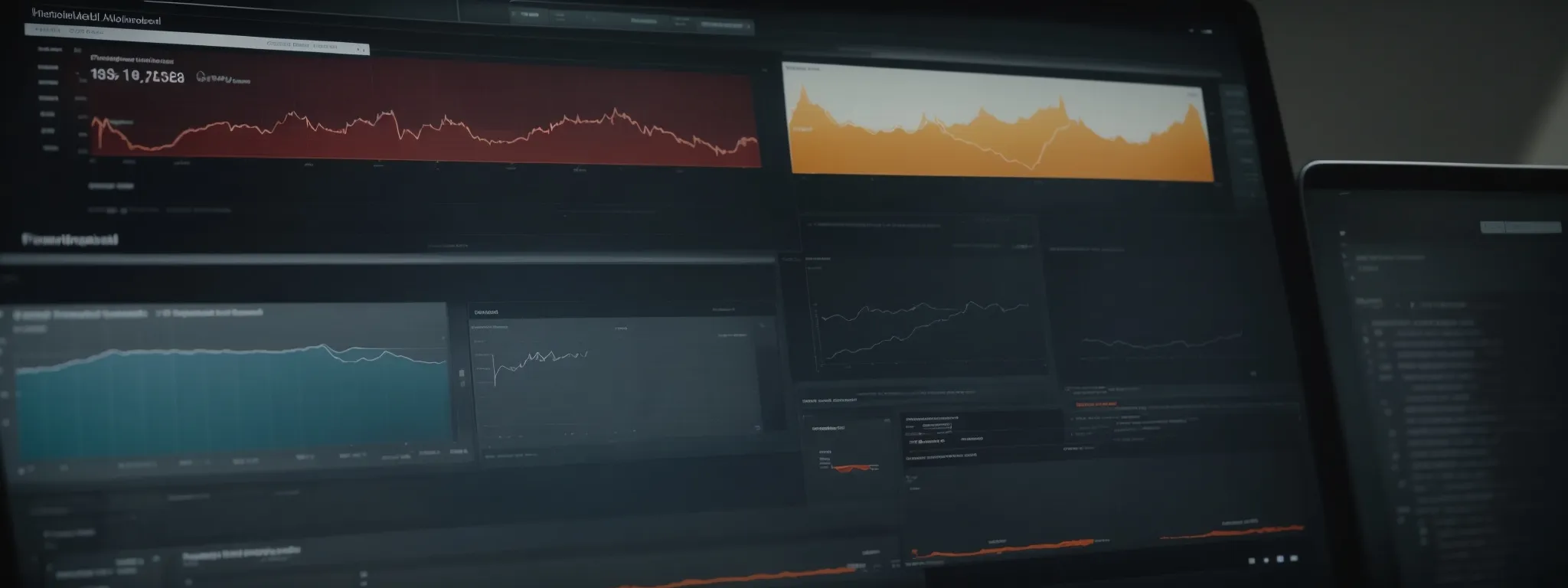
The digital landscape is witnessing a transformative coupling between search engine optimization (SEO) and user experience (UX) design, underscoring the imperative for brands like LinkGraph to align their SEO services with impeccable UX design.
Venturing into this space requires a deep understanding of how these seemingly disparate elements coalesce to form a robust criterion in the algorithims of search engines like Google.
This necessitates a thorough knowledge of user experience as a critical ranking factor, a reflection on the intertwined history of SEO and UX, and recognition of the algorithm’s maturation to place a premium on the quality of user interactions.
LinkGraph, with its mastery in SEO strategy and services, acknowledges this evolution, ensuring that user experience is at the forefront of its SEO endeavors, including their acclaimed SearchAtlas SEO software and comprehensive SEO services.
Defining User Experience as a Ranking Factor
In today’s intricate web of SEO practices, user experience emerges as a pivotal ranking factor for search engines. Driven by the user-centric metrics, sites with intuitive navigation, quick page load speeds, and content that resolves the searcher’s query not only tend to rank higher but also foster sustainable organic growth.
The merit of a user-focused approach is clear: when users stay engaged longer, search engines interpret the site as valuable, leading to improved search engine rankings. This symbiotic relationship underscores the strategic importance of incorporating effective UX design into the core of comprehensive SEO strategies offered by experts like LinkGraph.
- Streamlined site architecture enhances website navigation
- Optimized page load speed influences user engagement metrics
- Responsive web design adapts to user’s device for a seamless experience
Exploring the History of SEO and UX
In the fledgling stages of SEO, search engines predominantly based their rankings on the simplicity of keyword matching and meta-data scrutiny. UX design, with its focus on the aesthetics and functionality of a website from a user’s perspective, initially operated in a silo, removed from the technical realm of SEO practitioners.
As search engines evolved, the timeline of updates unveiled a gradual convergence where UX metrics began to influence search rankings directly. This shift marked a departure from the once narrow SEO focus, encouraging a union with UX principles to shape the end-to-end user journey on a digital platform:
| Year | SEO Milestone | UX Milestone |
|---|---|---|
| Early 2000s | Keyword-focused optimization | Rise of user-centric design thinking |
| 2010 and onwards | Introduction of user behavior metrics in algorithms | Advent of mobile-first and responsive design |
| 2020s | Page experience signals integrated into ranking | Recognition of inclusive and accessible design as industry standards |
How Google’s Algorithm Has Evolved to Value UX
Google’s search engine algorithms have undergone a significant transformation, now emphasizing the elements of UX design as pivotal criteria for search engine rankings. The alignment of SEO priorities with user-centric web design reflects a holistic view of how visitors interact with web pages, thereby elevating websites that offer superior user experiences in Google search results.
With each update, the algorithm enhances its ability to measure user satisfaction, integrating UX elements such as intuitive site architecture, mobile responsiveness, and accessibility, ensuring that user-friendly sites receive the visibility they deserve. This evolution demonstrates Google’s commitment to making the web a more user-focused environment, a principle that LinkGraph’s SEO services and their SearchAtlas SEO software readily embody.
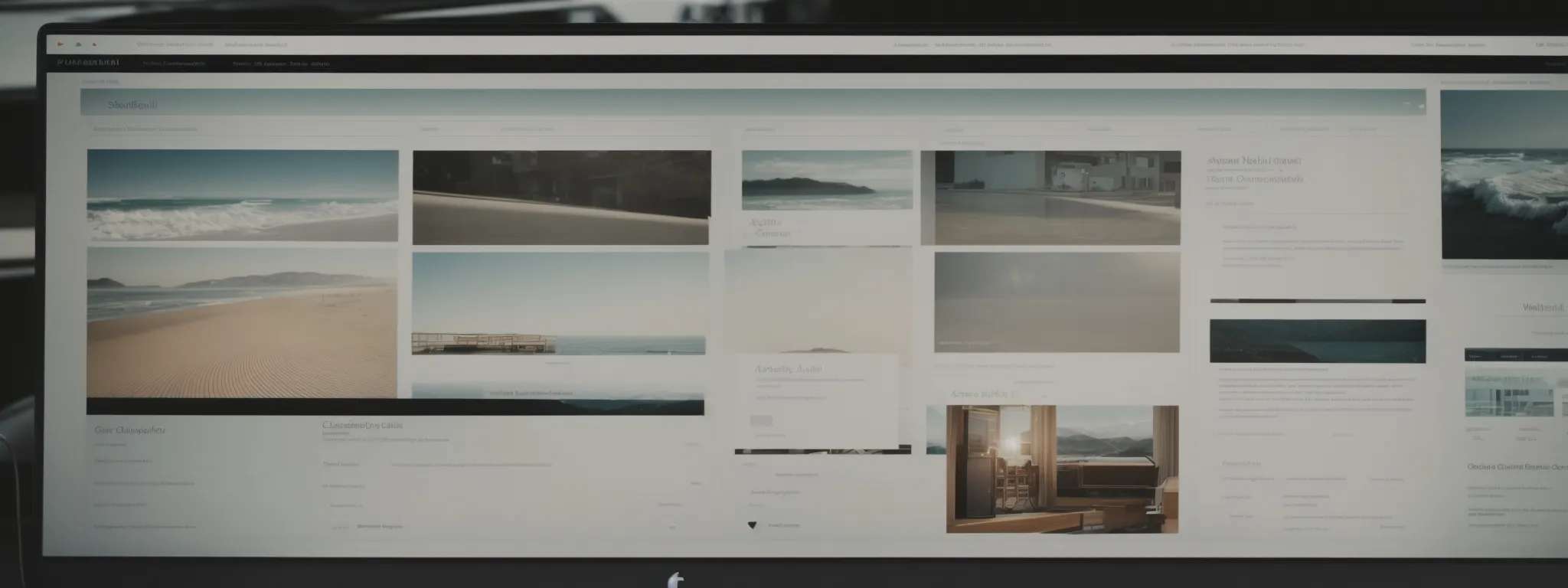
As the digital arena continues to expand, optimizing website navigation emerges as a vital component in harmonizing SEO with user experience.
Crafting intuitive menus and categories, acknowledging the importance of breadcrumbs for SEO, and developing strategies for a user-friendly site structure constitutes the trifecta for facilitating ease of exploration for visitors, while simultaneously communicating site hierarchy to search engines.
This convergence between navigational clarity and technical SEO not only bolsters user satisfaction but also amplifies the visibility of websites within the competitive terrain of search rankings.
Crafting Intuitive Menus and Categories
Intuitive menus and categories are the bedrock of a seamless user experience, anchoring a website’s usability. An adept construction of these elements by LinkGraph allows users to find information effortlessly, mirroring the logical flow of their search intent.
- Efficient categorization supports user journey
- Menus reflect the natural thinking process of visitors
- Search intent guides the architecture of navigational elements
LinkGraph capitalizes on these principles, ensuring their on-page SEO services not only satisfy the user’s quest for information but also enhance the site’s visibility to search engine algorithms. Mastery in this aspect of UX design is a critical component in the elevation of search rankings, reflecting the brand’s Comprehensive Understanding of the User’s Needs and expectations.
The Importance of Breadcrumbs for SEO
Breadcrumbs serve as a navigational aid, unfurling the path users have taken from the home page to their current location within a website. This subtle yet effective feature not only enhances user experience by allowing visitors to navigate the site hierarchy with ease but also aids search engines in understanding the structure and context of website content, thus reinforcing the importance of structured data for SEO performance.
By integrating breadcrumbs, LinkGraph exemplifies user-centric refinement and metalwork in SEO, providing clear, clickable pathways that not only guide users back to broader categories but also disseminate valuable context to search engine crawlers. Such attention to detail underpins the intricate balance between satisfying the searcher’s need for orientation and catering to search engine algorithms’ hunger for structure, thereby boosting the site’s SEO rank.
Strategies for a User-Friendly Site Structure
Deploying a user-friendly site structure is pivotal for businesses aiming to augment their SEO footprint while delivering an outstanding user experience. LinkGraph’s white-label SEO services focus on developing clear hierarchies and logical link structures, ensuring that visitors navigate with confidence and search engines index web pages efficiently.
A cohesive site structure demands meticulous planning, where aspects such as categorization, hierarchy, and internal linking are tailored to the user’s behavior patterns and preferences. The result is a website that not only resonates with the target audience but also aligns with the nuanced demands of search engine algorithms:
- LinkGraph prioritizes logical categorization to mirror user search patterns.
- Strategic internal linking reinforces website hierarchy and distributes page authority.
- Seamless site architecture from LinkGraph ensures ease of navigation for enhanced user satisfaction.
Leveraging Website Design for Improved Usability and Rankings
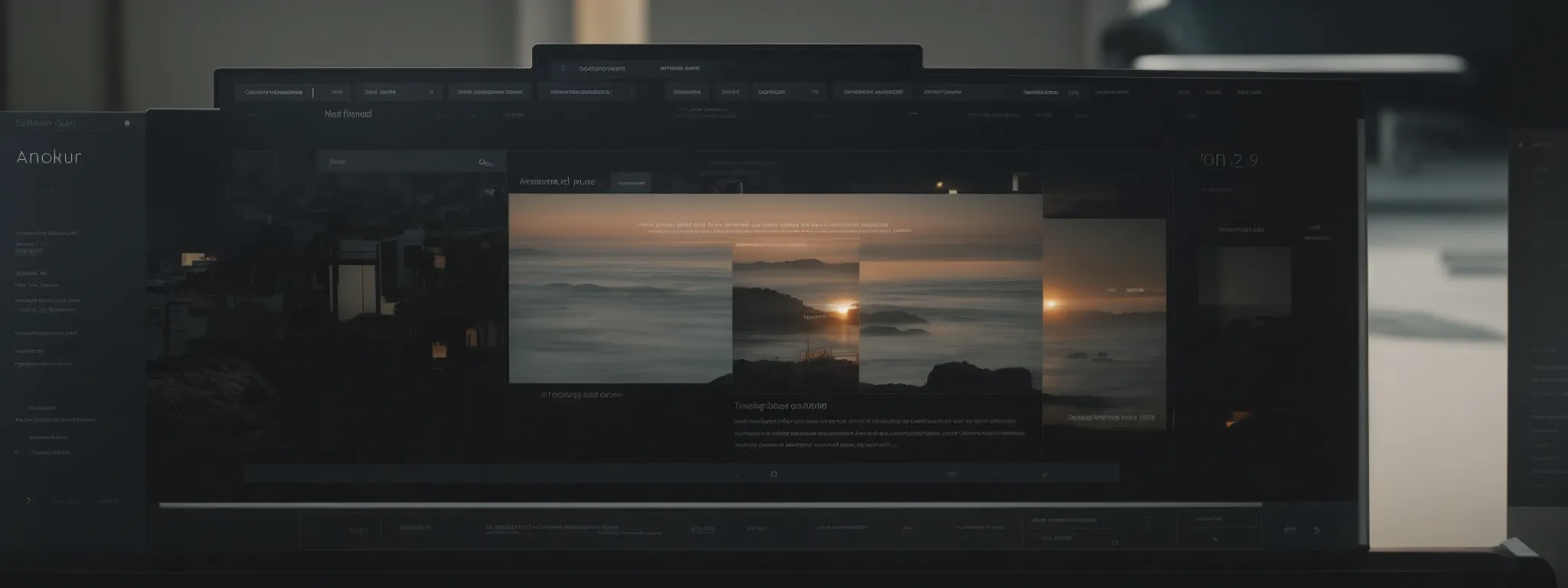
In the quest to secure top rankings in search engine results, the importance of a well-designed website cannot be overstated.
Seamlessly blending aesthetics with functionality is vital for optimizing user experience (UX), a critical determinant of SEO success.
By navigating the intricacies of visual hierarchy to boost user engagement, employing white space strategically to enhance readability and SEO, LinkGraph provides a holistic approach to web design that transcends mere appearances, aligning with the sophisticated algorithms that govern today’s search rankings.
In this context, a website’s design is not just about visual appeal but a well-orchestrated effort to guide users and search engines alike through a meaningful and rewarding journey.
Balancing Aesthetic and Functionality for Optimum UX
LinkGraph champions a meticulous blend of aesthetics and functionality by fabricating websites that not only captivate but also cater flawlessly to user needs. Their adept application of UX principles in this realm ensures that each design element contributes positively to the overall SEO performance, engaging visitors with an attractive layout while facilitating their navigation with intuitive functionality.
Recognizing that user engagement is paramount, the team at LinkGraph systematically optimizes various components such as typography, color schemes, and imagery to complement the efficient UX design. This harmonious integration elevates the user journey, propelling the dual objectives of maintaining aesthetic allure and bolstering SEO efficacy.
The Role of Visual Hierarchy in User Engagement
Visual hierarchy stands as a cornerstone within the domain of UX design, deftly steering user attention to priority content and calls to action on a web page. LinkGraph’s insightful design choices prioritize the sequence in which visual information is processed, ensuring that prime real estate on the screen is devoted to the most significant elements, thereby enhancing user engagement and contributing to a more strategic SEO approach.
In the intricate dance of sight lines and mouse clicks, visual hierarchy dictates the tempo, guiding users through a narrative constructed by size, color, and spatial relationships. LinkGraph’s deliberate manipulation of these visual cues ensures that each visitor’s experience is not only aesthetically pleasing but also intuitively directs them towards fulfilling their search intent, a practice that has shown to improve metrics related to user engagement and, consequently, search engine rankings.
Utilizing White Space to Improve Readability and SEO
In the realm of website design, LinkGraph employs white space strategically to facilitate a reader-friendly environment that enhances both readability and SEO performance. Clever utilization of white space not only prevents content from appearing cluttered but also focuses user attention on the most important information, encouraging deeper engagement and interaction with the content.
With attention to detail, LinkGraph’s web design experts recognize that balanced white space can improve user experience by making text easily skimmable and by guiding the eye through the content in a logical manner. This approach contributes to reduced bounce rates and increased time on site, two user engagement metrics that are highly valued by search engine algorithms in determining page rankings.
Accelerating Site Performance for UX and SEO Boost
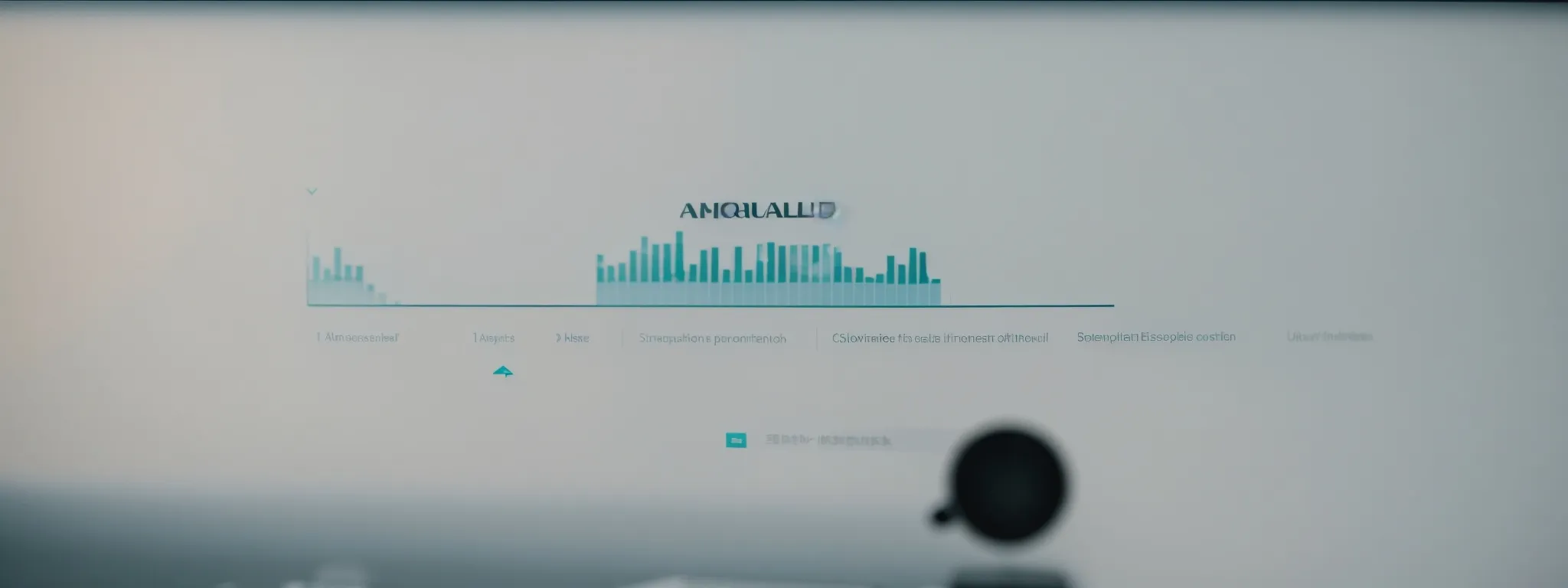
Within the digital marketing matrix, the velocity at which a website performs is tantamount to its ability to ascend in search engine rankings.
Acknowledging that page load speed is not just a convenience but a requisite, experts at LinkGraph rigorously optimize Core Web Vitals, thereby enhancing the overall user experience.
Meticulous about the pivotal role of site performance, they apply sophisticated techniques for speed optimization that intersect directly with search engine optimization (SEO), understanding that swifter loading times can dramatically reduce bounce rates and incrementally improve search rankings.
By weaving together the technical threads of performance metrics with the silk of smooth user experience, LinkGraph positions client websites at a zenith of optimization, attuned to the rhythms of both the end user and the algorithms that govern digital visibility.
Addressing Core Web Vitals for a Better User Experience
In the relentless pursuit of stellar SEO performance, LinkGraph harnesses the significance of Core Web Vitals, recognizing them as key indicators of website health and user satisfaction. These metrics gauge the quality of user experience, including loading times, interactivity, and the stability of content as it renders on the screen.
Under the meticulous guidance of LinkGraph, websites undergo optimization enhancing each Core Web Vital, aiming to surpass the benchmarks set by Google: Largest Contentful Paint (LCP), First Input Delay (FID), and Cumulative Layout Shift (CLS). This optimization ensures a fluid and responsive user experience, essential for securing favorable positions in search engine results:
| Core Web Vital | SEO Impact | UX Focus |
|---|---|---|
| Largest Contentful Paint (LCP) | Page Load Speed | Perception of Speed |
| First Input Delay (FID) | Interactivity | Responsiveness to User Input |
| Cumulative Layout Shift (CLS) | Visual Stability | Content Stability During Load |
Techniques for Speed Optimization That Aid SEO
LinkGraph’s repertoire of SEO innovations extends to optimizing website speed, acknowledging that page load times significantly impact both user experience and search rankings. By compressing images, leveraging browser caching, and minimizing JavaScript execution time, LinkGraph’s technical team ensures that each website page loads with alacrity, aligning with the expectations of a swift digital experience.
Another technique central to LinkGraph’s approach involves Implementing Responsive Design, which not only caters to users across various devices but also positively influences SEO. While responsive websites offer a seamless experience on any device, they concurrently minimize duplicate content issues, streamlining SEO efforts:
| Speed Optimization Technique | UX Improvement | SEO Benefit |
|---|---|---|
| Image Compression | Faster Load Times | Lower Bounce Rates |
| Browser Caching | Quick Return Visits | Enhanced Indexing Efficiency |
| Responsive Design | Device Flexibility | Better Mobile Usability Score |
Adapting server configurations to enable GZIP compression and optimizing the delivery of CSS and HTML stand as further enhancements made by LinkGraph. These meticulous adjustments contribute to reduced server response times and a more fluid user experience, contributing in turn to elevated search engine placement.
The Impact of Fast Loading Times on Bounce Rates
The correlation between fast loading times and bounce rates is a testament to the impatient nature of modern internet users. When LinkGraph optimizes a website’s loading speed, they not only retain the user’s attention but also minimize the likelihood of them leaving the page prematurely, a behavior that significantly impacts SEO rankings.
Evidence shows that websites which load swiftly captivate their visitors, effectively reducing bounce rates—a benefit that search engines recognize and reward. By achieving faster loading times, LinkGraph enhances the user’s experience, implicitly signaling to search engines the worthiness of the webpage for higher search ranking placement.
Emphasizing Mobile Usability in UX and SEO Strategies

In an age where the ubiquity of smartphones dictates a significant portion of online traffic, providing an optimal experience for mobile users has become a cornerstone in shaping effective SEO strategies.
Recognizing the critical influence of mobile usability on search engine visibility, LinkGraph integrates best practices for crafting mobile-friendly user interfaces that harmoniously align with search behaviors.
Conjunctively, adapting user journey mapping for mobile experiences ensures a consistent and engaging interaction, pivotal for holding the attention of on-the-go audiences.
This integration of mobile optimization within UX and SEO is not just a concession to the trends but a strategic effort to meet the evolving standards of search engine algorithms and user expectations.
Best Practices for a Mobile-Friendly User Interface
In a landscape dominated by touchscreens and on-the-move digital interactions, it is imperative for brands to cultivate mobile-friendly interfaces that provide clear navigation and swift, responsive action. LinkGraph’s mindful application of mobile UX design ensures that user interfaces cater to thumb-scrolling habits and touchscreen ergonomics, facilitating an engaging and frictionless experience for mobile users.
The optimization of mobile interfaces by LinkGraph goes beyond superficial aesthetics, delving into seamless functionality that aligns with the natural use patterns of mobile devices. Employing finger-friendly tap targets, legible font sizes, and accessible menus, LinkGraph’s UX design for mobile platforms is meticulously calibrated for superior user interaction and engagement.
| Mobile UX Factor | LinkGraph Focus | User Benefit |
|---|---|---|
| Tap Targets | Finger-friendly Design | Facilitates Easy Navigation |
| Font Size | Readability on Small Screens | Improves Content Consumption |
| Accessible Menus | Intuitive UI Elements | Reduces User Friction |
How Mobile Optimization Influences Search Engine Visibility
Mobile optimization is a critical factor that LinkGraph vigilantly incorporates into their SEO services, understanding its power to significantly amplify a website’s visibility on search engines. By tailoring site design to adapt elegantly to mobile dimensions, ensuring touch responsiveness, and optimizing mobile load times, LinkGraph’s strategies directly contribute to enhancing a website’s prominence in the mobile-first indexing that dominates search rankings.
The advent of Google’s mobile-first indexing underscores the need for websites to perform flawlessly on smartphones and tablets. LinkGraph’s diligent application of mobile usability principles not only enhances the user experience for a majority of digital consumers but also signals to search engines the site’s readiness to serve the contemporary, mobile-centric audience, thereby improving search engine visibility.
Adapting User Journey Mapping for Mobile Experiences
Adapting user journey mapping for mobile experiences plays a pivotal role in LinkGraph’s mobile optimization strategy. By analyzing and refining the pathways that users take on mobile devices, LinkGraph ensures a focused, intuitive navigation experience that complements mobile browsing behaviors and enhances overall site engagement.
LinkGraph’s Strategic Approach to User Journey Mapping accounts for the nuances of mobile interactions, optimizing touchpoints to reduce friction and guide mobile users smoothly towards their desired outcomes. Such meticulous adaptation of user pathways is instrumental in elevating both the user experience and the website’s search engine ranking.
Creating Content That Serves UX and SEO Goals

In the quest to propel search rankings, the creation of content that resonates with both the user experience (UX) and search engine optimization (SEO) is paramount.
This intricate intersection requires content that not only satisfies user queries but also embodies the structural elegance that search engines favor.
By curating content with meticulous layouts that augment readability, and by weaving in multimedia elements to captivate and encourage sharing, LinkGraph meticulously tailors a content strategy that bridges the gap between user satisfaction and SEO imperatives.
Herein lies the challenge: crafting a narrative that pleases the discerning eye of both the audience and the algorithmic judges of the digital realm.
The Intersection of High-Quality Content and User Satisfaction
High-quality content stands at the confluence of user satisfaction and search engine optimization, serving as the lifeblood of any digital strategy. By concentrating on the provision of informative, engaging, and value-driven material, LinkGraph ensures that content not only fulfills the information-seeking needs of the audience but also aligns with the refined criteria of search engines.
LinkGraph crafts each piece of content with the dual aim of meeting user expectations and enhancing SEO performance. The content created is engineered to resonate with the audience, offering answers to their queries while simultaneously adhering to the structural prerequisites that search engines use to rank web pages.
Effective Content Layouts That Enhance Readability and SEO
LinkGraph’s strategic approach to content layout focuses on Facilitating Effortless Information Discovery, which is pivotal to maintaining a reader’s interest and meeting SEO criteria. Transparent headings, subheadings, and bullet points not only punctuate the text for improved reader digestion, but these hierarchical structures also enable search engines to parse and index content efficiently, boosting the SEO rank of a page.
Meticulous attention to detail in content formatting is a hallmark of LinkGraph’s commitment to immaculate UX and SEO. The judicious use of short paragraphs, informative subheadings, and a scannable structure serves a dual purpose: ensuring content is easily consumable for the user while optimizing for the algorithms that influence search visibility:
- Headings and subheadings structured for clarity
- Bullet points that distill complex information
- Short paragraphs to maintain user interest and aid readability
Incorporating Multimedia to Increase Engagement and Shares
LinkGraph recognizes the power of multimedia in enriching the user experience and amplifying digital content’s potential for engagement and social sharing. By embedding relevant images, videos, and interactive elements within content, they ensure higher user interest and increased dwell time, factors that are conducive to both sharing behaviors and SEO advancements.
Integrating a variety of media formats, from infographics to tutorial videos, LinkGraph strategically enhances the narrative flow of web content. The inclusion of multimedia not only breaks the monotony of text but also provides a dynamic, multisensory experience that encourages users to engage with the content more deeply and share it within their networks, thereby strengthening the content’s visibility and reach.
Monitoring UX and SEO Performance Through Analytics
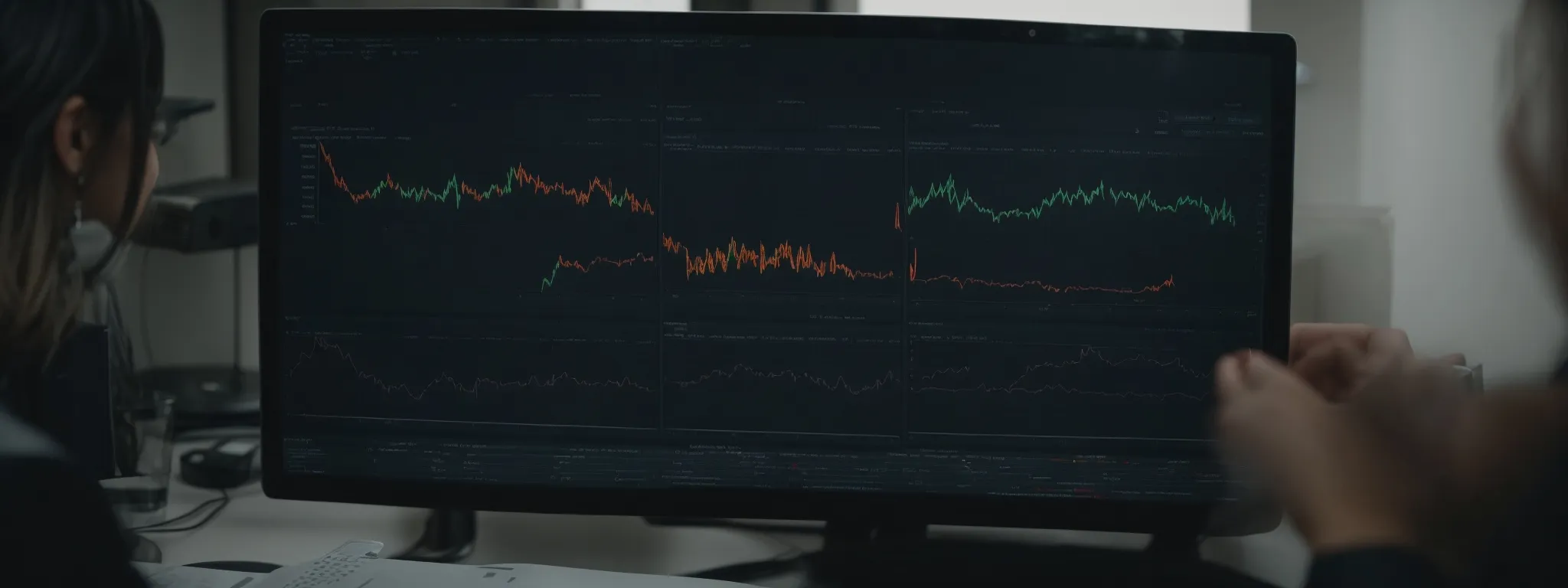
In an era where the user’s online experience can make or break a website’s search rankings, the diligent monitoring of UX and SEO performance through analytics has become a cornerstone practice for discerning digital marketers.
LinkGraph’s SEO services place significant emphasis on identifying and tracking the right Key Performance Indicators (KPIs) that encapsulate UX and SEO effectiveness.
Utilizing data-driven methodologies like A/B testing, LinkGraph fine-tunes client websites, ensuring continuous UX improvements while harnessing advanced tools and platforms to rigorously evaluate user experience metrics.
This analytical approach ensures a precise assessment of strategies, propelling websites toward superior user engagement and amplified search visibility.
Key Performance Indicators to Measure UX and SEO Effectiveness
Identifying and tracking the right Key Performance Indicators (KPIs) is critical for evaluating both user experience (UX) and search engine optimization (SEO) effectiveness. LinkGraph employs a meticulous approach to analytics, pinpointing metrics such as bounce rate, session duration, and pages per session to deliver insights into user engagement and content relevance:
- Bounce rate reveals the percentage of single-page visits, indicating content resonance or a need for optimization.
- Session duration measures time spent, signifying the level of user interest and content engagement.
- Pages per session indicate site exploration depth, reflecting effective internal linking and user satisfaction.
These indicators, combined with data on organic traffic, conversion rates, and click-through rates, allow LinkGraph to assess SEO performance comprehensively. By ensuring that every web page aligns with users’ search intents and provides a satisfying UX, the company’s specialized SEO services effectively enhance search rankings and digital visibility.
Utilizing a/B Testing for Continuous UX Improvements
LinkGraph leverages A/B testing as a strategic tool to refine UX elements for peak performance. This evidence-based tactic allows practitioners to serve two versions of a webpage to distinct user segments, thereby revealing which version drives superior user engagement and SEO outcomes.
In this relentless quest for UX perfection, A/B testing insights direct continuous enhancements to web design and functionality: whether tweaking a call-to-action button or restructuring a landing page’s layout, LinkGraph meticulously transforms these empirical findings into actionable data that fosters iterative improvements and bolsters SEO success:
- Variant assessments highlight design elements that resonate with users.
- Insights from A/B tests inform strategic adjustments to user pathways.
- Incremental refinement through testing optimizes the overall user experience.
Tools and Platforms to Evaluate User Experience Metrics
LinkGraph Capitalizes on Advanced Tools and Platforms to rigorously evaluate metrics that convey the nuances of user experience. Employing sophisticated analytics software, the company discerns patterns and trends within user interaction, transforming quantitative data into actionable insights for enhancing the efficacy of their SEO services and UX designs.
These analytics platforms provide a comprehensive view of website performance, allowing LinkGraph to scrutinize elements such as click-through rates and heat maps. The insights gleaned support the optimization process, making data-driven decisions that refine the user journey, improve content relevance, and subsequently elevate search rankings.
Conclusion
In conclusion, optimizing user experience (UX) is essential for achieving better search rankings, as demonstrated by the symbiotic relationship between UX design and search engine optimization (SEO).
LinkGraph’s acknowledgement of this connection ensures that their SEO strategies incorporate a user-centric approach, which enhances site navigation, improves content readability, and ensures swift website performance.
By focusing on UX elements such as intuitive menus, responsive web design, mobile usability, and the strategic use of multimedia content, they directly contribute to a website’s visibility and prominence in search results.
Employing analytics and tools like A/B testing allows for the monitoring and continuous refinement of both UX and SEO performance.
This integrated approach, which addresses the core principles of UX while satisfying the requirements of modern search engine algorithms, is pivotal for digital marketers aiming to maximize engagement and boost search visibility.














































































